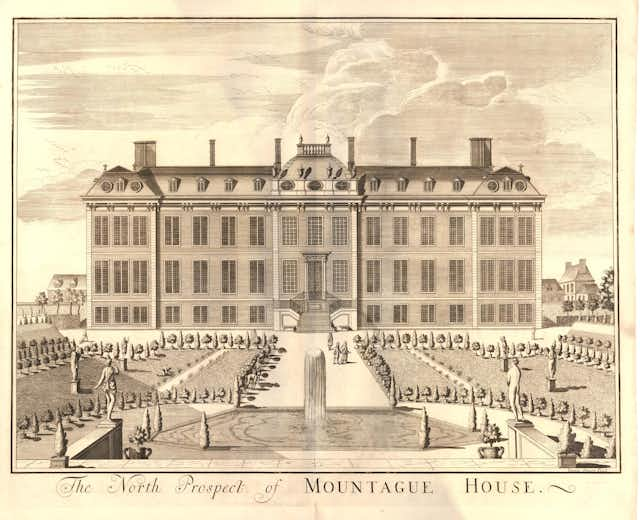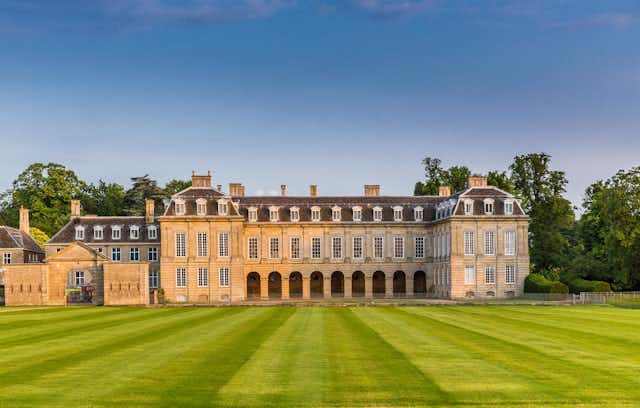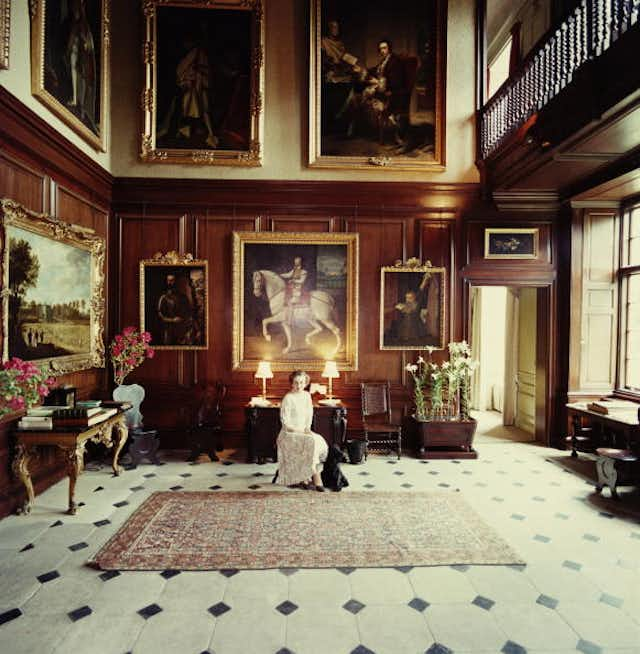From The Conversation:
ShareMontagu inherited his family’s country seat in Northamptonshire when his father died in 1684. A monastic building was converted into a manor house by Sir Edward Montagu in 1528, following the dissolution of the monasteries by Henry VIII. The younger Montagu’s renovations began upon his inheritence and continued well into the 1690s.
Montagu’s contemporaries knew Louis XIV’s palace was the inspiration for Boughton.
The “Sun King” had transformed his father’s modest hunting lodge at Versailles into the most magnificent palace of the age. By 1680, it was the French king’s principal residence and the centre of government.
According to one account written shortly after Montagu’s death, Boughton was:
contrived after the Model of Versailles, with extending Wings, excellent Avenues, Vistas and Prospects; for Rich Furniture, Exquisite Gardens, Beauty of Building, and advantageous Situation, scare to be equalled in Britain.
Boughton House may not be well know today, but it was famous when it was built.
Montagu was a greedy and ambitious fellow. He married twice for money and to advance his social status. He first went to France as an ambassador of King Charles II of England in 1669.
Although he was a minor noble, as the representative of the King of England his official entry into Paris was of unequalled magnificence. He developed a taste for the finest things at the time France was fast becoming the centre for luxury in Europe.
He travelled to France again in 1678, and returned to England with more than 200 trunks filled with works of art and furniture. (Read more.)




















No comments:
Post a Comment